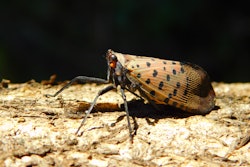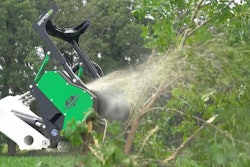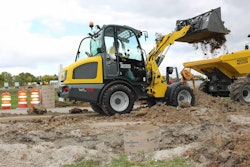
Spring is just around the corner and that means people will start spending more time outside. When the grass begins to green up, homeowners start thinking about getting their yards in shape for the warmer months. As a landscape pro, you can be a valuable ally to help set your clients up for summer success with their lawns — whether you’re providing a full suite of services or supplementing homeowners’ DIY maintenance activities.
Following are three lawn care tips to start your clients on the path toward a lush green lawn.
Encourage smart watering
To help your clients create a low-water lawn that will be resilient come summer, you’ll want to educate them on smart watering practices. Many homeowners tend to neglect irrigation in the spring, when lawns are transitioning out of dormancy and need to establish strong root systems, and overwater in the summer.
Whether your clients have an irrigation system or are watering by hand, they should be aware of basic best practices: water deeply once or twice a week rather than a little every day, water during the cooler hours of the early morning or evening, use a sprinkler that deposits large drops close to the ground rather than releasing a fine mist into the air, and establish a regular watering routine that will give the grass consistency.
Ensure proper mowing
Whether your clients are mowing their own lawns or you’re doing it for them, make sure they understand that letting the grass get too tall and then cutting it short is stressful to the plants, and it can deplete their energy reserves and weaken their resistance to weeds and pests.
Cale Bigelow of Purdue University’s turf science program says the stress from a spring scalping can affect the lawn throughout the summer. It’s best to never cut off more than about a third of the height of the grass blade at one time, so in the spring, when the grass is growing quickly, more frequent mowing is better — sometimes twice a week is helpful. (This can be an opportunity to take some work off busy clients’ hands!)
Peter Landschoot of the Penn State College of Agricultural Sciences notes that record summer rains in the mid-Atlantic area in 2018 led many homeowners to delay mowing, but when it rains day after day, grass grows quickly and needs to be cut. It’s not ideal to mow during the rain or when the turf is still wet, but it’s better than letting the grass grow too long. Landschoot recommends washing the mower afterward to remove any wet grass sticking to the mower deck.
Offer spring revitalization services
Clients may see their grass turning green and assume that all they need to do is water and mow for the rest of the season, but there are a few spring revitalization measures that you may want to propose to help support the long-term vitality of the turf:
- If more than half an inch of thatch has accumulated, it might be time for dethatching, to enable water, nutrients and oxygen to better penetrate the soil. If the thatch layer is not excessive, a good raking is likely sufficient.
- In the northern U.S., where cool-season grasses prevail, annual aerification is recommended to improve drainage and prepare the soil for any seed application. But according to Clint Waltz of the University of Georgia, warm-season lawns that suffered through one or more drought-induced dormancy periods the previous year can also benefit from core aerification in late April through mid-May.
- Clients may want to reinvigorate a thin lawn by interseeding in late spring. Filling in any bare spots and thickening the turf is a good way to prevent weeds from encroaching — and giving the grass a head start by planting in the spring will allow the lawn to be well established before it faces summer drought and heavier use.
Educating your clients about best practices and implementing revitalization measures that get the turf off to a good start this spring will pay off later in the season — when the satisfied homeowners are able to enjoy relaxing, playing and entertaining on a healthy and happy lawn.
EDITOR’S NOTE: This article was written by Bryan Ostlund, Grass Seed USA. Grass Seed USA is a national coalition of grass seed farmers and academic turf specialists with a wealth of experience in studying, growing and harvesting grass and grass seed. The coalition seeks to inform and educate residential and commercial customers about the benefits of grass and best practices for responsibly growing and maintaining healthy turf. For more information, visit www.weseedamerica.com or follow @WeSeedAmerica on Facebook and Twitter.









